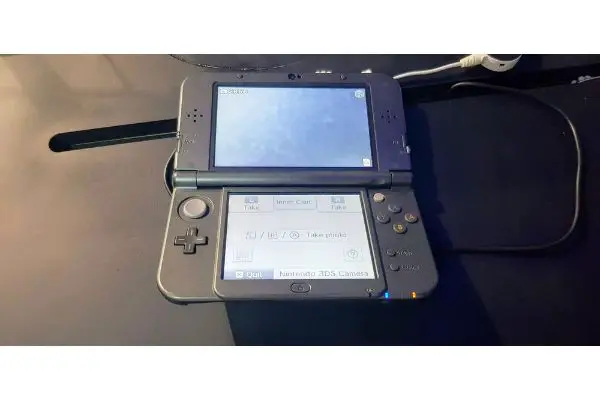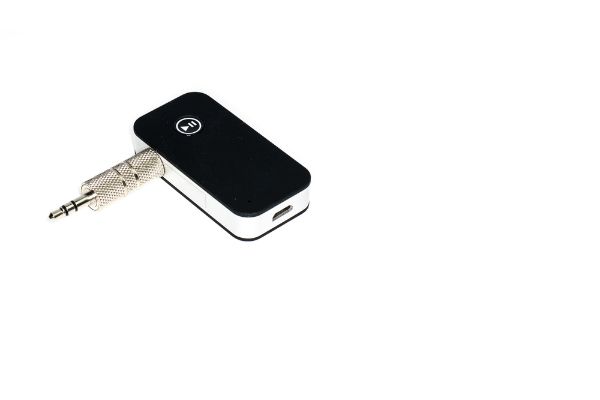Disclaimer: This post may contain affiliate links, meaning we get a small commission if you make a purchase through our links, at no cost to you. For more information, please visit our Disclaimer Page.
The 3DS is a portable gaming console developed by Nintendo, and it is unique for being both handheld yet a dual-screen gaming device at the same time. Some older gamers or those interested in retro consoles and devices might liken the 3DS to a Game Boy or Game Gear, but the 3DS has added functionality thanks to the use of two screens, each sitting on the top and bottom of the device.
Additionally, the 3DS, as its name suggests, is capable of rendering 3D-style graphics without needing to use special lenses in order to see the effects. Some players wonder if the 3DS supports native Bluetooth connectivity.
We’ll discuss whether the 3DS can handle anything related to Bluetooth, how you might be able to pair other devices with it, and talk a bit about the 3DS’ cousin, the 2DS XL, in our article below.

(Attribution: ©[Wirestock]/Depositphotos.com)
Table of Contents
Does the 3DS Have Bluetooth?
As of now, the Nintendo 3DS does not support native Bluetooth capabilities. While the lack of original support for Bluetooth might be somewhat inconvenient for some users, there are a few possible reasons that Nintendo might have made this decision.
1. Although Nintendo is a gaming company, its focus is on entertainment consoles with features that are made specifically to enhance gaming.
While it is true that Bluetooth might do this in terms of peripheral devices, it could also mean that players would lose some of the portability of the console itself.
That may seem strange when talking about a feature that requires no wires, but it comes into play with some of the other possible reasons for the company deciding not to implement any Bluetooth functionality.
Additionally, Bluetooth might not necessarily enhance the gaming experience of most of the kinds of games that Nintendo released for the 3DS, depending on how they were meant to be played.
2. The company would need to acquire the appropriate licenses in order to use the feature on their consoles. This might have been a costly endeavor on Nintendo’s part, and it could have further increased the development time, production costs, and overall price for the handheld console itself upon release.
To save some time and money, Nintendo chose not to implement a feature that might not significantly improve gaming for the vast majority of players.
3. Because Bluetooth drains further battery charge when it is active, it would shorten the battery life of the 3DS between charges.
When your focus is on making a small console that is as portable as possible, battery life is one of the more important aspects that you’re going to be focusing on.
Running games can already drain the battery relatively quickly over long play sessions, and Nintendo probably didn’t see a good reason to further exacerbate this issue by adding a feature that might, at best, support the use of wireless headphones.
Ultimately, while we may not know the company’s exact reasoning for deciding not to add Bluetooth when many portable devices today do have it installed, it is a safe bet that it was some combination of the factors above.
Had the Bluetooth capabilities for the 3DS been more varied, it is possible Nintendo would have seen acquiring such licenses and spending such time on it as good investments.
Can You Use AirPods or Bluetooth Headphones With a 3DS?
While it is true that the 3DS doesn’t have Bluetooth capabilities built into its design, there are some workarounds that allow users to connect their 3DS consoles with wireless headphones that support Bluetooth.
The main workaround will involve a small investment and a bit of extra tech on the part of the player, but if having access to wireless sound connectivity is important, it is probably worth a little time and money. We can get into just how the 3DS can get its own Bluetooth capability in the next section.
However, it is important to stress that having Bluetooth active and using it for wireless headphones or pods can drain the battery more quickly than just using the portable console without Bluetooth.
We touched on this earlier, but it is something most users will probably want to keep in mind if they are taking their 3DS consoles out and about and don’t have a great way to charge them on the go.
Further, because you will need to add a little something to the 3DS in order to get it to pair with wireless headphones, it will lose a little bit of what makes it so portable. You’ll have another small device sticking out of the bottom of the 3DS.
While you can remove it for storage, you’ll need it plugged into the console in order to enjoy Bluetooth. These adapters are not huge, but it may matter to some players who value the portable nature of the 3DS over being able to use wireless headphones with it.
How Can I Get the 3DS To Have Bluetooth?
Before we get into how to do this, you should know that you will need to invest in a small Bluetooth adapter or transmitter in order to perform the workaround.
As the name suggests, an adapter allows a device that doesn’t have the native function that allows it to connect with other electronics to acquire such an ability.
Several adapters that can do this are available for purchase on the market. Because you just need one dedicated function, most of the adapters you find should work fine.
As with many things that are tech-related, we do recommend going for at least a mid-range adapter in terms of quality and price.
This will give you some assurance that the adapter will work for your needs right out of the box, and most of them are not expensive, so it makes sense to spend a bit on a good name just to make sure you get what you need.
The steps we outline here are general, but they should work for most of the kinds of wireless headphones or earbuds you have. Some slight modifications might be necessary depending on the functions or buttons that are part of your headphones.
1. Once you have your adapter and have checked it out, you can start by putting your AirPods or other wireless headphones into pairing mode. This mode allows your headphones to search for nearby Bluetooth devices that are new.
Note that, if your headphones are already meant to be paired with a device that you usually use, you may need to unpair them to get them to stop searching for or automatically connecting to that device.
Most devices will store settings for multiple things they can connect to via Bluetooth, but they may connect automatically to nearby ones that are already active.
2. Next, take your new adapter and press and hold the power button in order to both turn the device on and put it in pairing mode. In most cases, both the headphones and the adapter should now show flashing lights, each of which may be different colors from one another. These lights are indications that the two devices are trying to connect to one another.
3. At some point, both lights should stop flashing and remain solid. This indicates that they have now paired up via Bluetooth.
4. Once you have this confirmation, you need to connect the adapter to your Nintendo 3DS. The adapter should have an appropriate single jack sticking out of it. You can insert this into the appropriate port at the bottom center of the Nintendo 3DS.
5. Once everything is set, you can insert your AirPods or the other wireless headphones of your choice. They should now feed you audio from the games.
6. If you would like to adjust the volume, you can do so using the native function for it on the side of the 3DS.
7. That’s all there is to it, though some of these steps may be slightly different depending on your wireless headphones setup or your adapter.
Does the 2DS XL Have Bluetooth?
The 2DS XL is part of Nintendo’s family of 3DS consoles. It represents the sixth and final form that the company decided to release as part of this series.
As some players might be able to guess from the name, it uses the architecture of the 3DS, but it doesn’t have the capabilities of displaying 3D graphics like its cousins. It is a companion to the original 2DS, but it features larger screens and is a bigger form factor overall.
However, much like anything in the 3DS family of systems, the 2DS XL also doesn’t support Bluetooth connectivity as a native feature. It does have near-field communication, otherwise known as NFC, but this is not the same kind of wireless linking.
It is possible that Nintendo decided that nothing in their 3DS line of consoles would need Bluetooth, and they may have made the decision based on reasons similar to the ones we talk about above.
Although the 2DS XL is different from the 3DS, it is still built along the same lines and principles as the original handheld console such as using the same memory, same charger, etc.
Therefore, players may be able to use workarounds similar to the one we went over above to find ways to make Bluetooth work with the 2DS XL.
Conclusion
In terms of portability, the 3DS is a great console. It also uses an auto-stereoscopic display to render some graphics in great, high-end quality, particularly for a small console with limited graphics display functions. However, it doesn’t support Bluetooth on its own.
Although it is only a minor issue, some players may wish to solve it by using adapters to connect wireless headphones to the 3DS.

